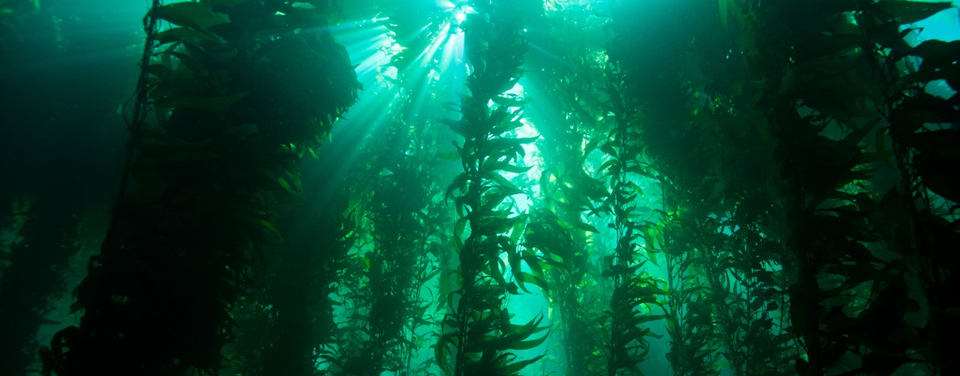Kelp forests are the biological foundation of marine ecosystems all along California’s coastline, and their collective biochemical activity may help offset ocean acidification, according to new research by CSUN marine biologists, recently published in the Journal of Geophysical Research: Oceans.
The study, conducted by CSUN Assistant Professor of Biology Kerry Nichols and former postdoctoral researcher Sarah Traiger with collaborators at Stanford University and the Monterey Bay Aquarium, is based on data from a giant kelp forest offshore of the Hopkins Marine Station on the Monterey Peninsula. Bouys moored inside the kelp canopy and in nearby kelp-free waters supported sensors to track currents, as well as the water’s acidity (pH), dissolved oxygen, and temperature at intervals from the ocean surface down to the bottom, and divers tracked the growth of kelp fronds near the buoy inside the forest. These readings and others from nearby weather stations allowed the team to estimate carbon fluxes, and corresponding changes in acidity, in the open water and within the kelp.
Comparing readings from inside and outside the forest revealed the kelp’s contribution to the water chemistry, over and above changes attributable to the currents and upwellings in the surrounding ocean. They documented daily cycles in which oxygen levels increased in surface waters, and a general pattern of reduced acidity in the forest-canopy surface waters — both consistent with photosynthetic activity by the kelp, which takes in carbon dioxide and releases oxygen. The reduced acidity did not continue in deeper waters within the kelp forest, however. Understanding why that was the case will require more observations, Nickols suggested in an interview with CSUN Today, but as it is the dataset helps to build an understanding of how kelp forest communities may respond to, and cope with, oceans acidified by carbon pollution.
The full paper is available Open Access on the journal website.
Image: Kelp forest (Flickr: NOAA)

